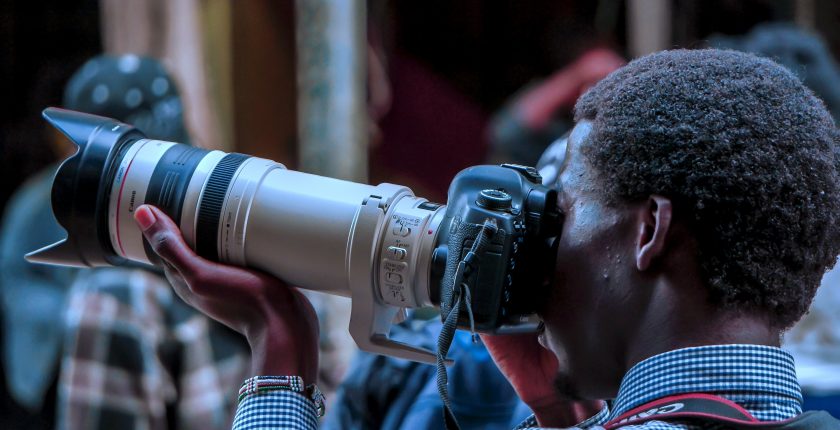Our Blog
Ethical Lens: Navigating Respect in Photography—Honoring Subjects and Cultures
- July 17, 2023
- Posted by: Semilore Adelola
- Category: Photography Tips

Photography is a potent tool for preserving memories and communicating tales, but it also carries with it, some important and crucial moral obligations. To uphold dignity, privacy, and cultural sensitivity, we must respect the people we photograph and the cultures they come from.
In this article, we’ll discuss the significance of photography ethics and offer five specific tips to assist photographers work through the challenges of portraying respect for people and cultures in their work.
1. Informed Consent:

Getting informed consent is a key ethical photography element. Before taking pictures of people or communities, it includes getting their permission. Explain your aims, the reason for the photos, and how they will be used when speaking with prospective subjects. It is important to make sure they comprehend the procedure and feel at ease with it.
For example, when you’re in a public space and somebody takes your picture without seeking your consent, it feels awkward and the only reason you can be at ease will be after getting proper explanation as to why your photographs are being needed. Keep in mind that consent is a continuous process and that individuals always have the option to revoke it. Respecting their choice is crucial.
As a street photographer, there are pictures that are best taken without seeking consents of your subjects in order to depict it’s originality and in such cases, there are exceptions and all you have to do is make sure you are not unethically invading their privacy.
2. Research and Cultural Sensitivity:
 When photographing people from many cultures, cultural sensitivity is essential. Study the traditions, customs, and social mores of the communities you plan to photograph in depth. You can approach your subjects with respect, empathy, and a deeper awareness of their cultural environment.
When photographing people from many cultures, cultural sensitivity is essential. Study the traditions, customs, and social mores of the communities you plan to photograph in depth. You can approach your subjects with respect, empathy, and a deeper awareness of their cultural environment.
Be mindful of any customs or symbols that might have special meaning, taboo, do’s and don’ts and take sensitive and suitable pictures of them. You are not at the liberty of taking pictures of specific people in specific environments you are not familiar with, without doing a background check on them.
3. Avoid Subject Exploitation and Stereotyping:
 Photographers need to be careful to avoid subject exploitation or the reinforcement of stereotypes. It is crucial to honestly reflect people and communities without supporting negative narratives.
Photographers need to be careful to avoid subject exploitation or the reinforcement of stereotypes. It is crucial to honestly reflect people and communities without supporting negative narratives.
Dispel stereotypes and make an effort to portray your topics’ diversity, complexity, and uniqueness. Never take advantage of weak people or sensationalize their circumstances for your own gain. Instead, make an effort to accurately and respectfully narrate their story. People in this category includes the physically challenged, less privileged, minors and lots more.
4. Privacy and Consent in Public spaces:

Although they provide a more accessible setting for photography, public spaces should still be used with consideration for others’ privacy and personal space. Be careful not to take pictures that violate their privacy or make them feel uncomfortable. When taking pictures of delicate subjects or delicate circumstances, use prudence and consideration.
When in doubt, get consent or don’t take the picture if it would violate someone’s dignity or privacy. There are circumstances whereby, it is an open event but the participants are so much keen about their identity, dignity and privacy. Take for instance, it’s time to eat at an event and a photographer is busy taking pictures of their mouth movements, they suddenly feel uncomfortable because the that is considered as invading their privacy.
5. Engage Your Subjects and Develop Relationships:

A crucial component of ethical photography is developing trusting relationships with your subjects. Spend some time talking to the subjects you are photographing, hearing their experiences, and getting to know them. Display sincere respect, empathy, and curiosity.
You can take pictures that are more meaningful and courteous by creating a connection based on mutual respect and trust. Keep in mind that trust, cooperation, and reciprocity should serve as the cornerstones of the connection between the photographer and the subject. Getting to know your subject, helps you get the best out of them because as a result of the newly built relationship, they are free with you and they can freely give their poses, laughter and also, jokes.
In conclusion, an essential component of ethical photography is respect for the people and cultures we capture. As photographers, we can make sure that our pictures respect the authenticity and dignity of our subjects by getting their informed consent, being culturally sensitive, staying away from exploitation and stereotypes, respecting their privacy, and developing connections. We may also, contribute to a more respectful, inclusive, and sympathetic representation of the diverse world we live in through ethical photography.
Leave a Reply Cancel reply
This site uses Akismet to reduce spam. Learn how your comment data is processed.
